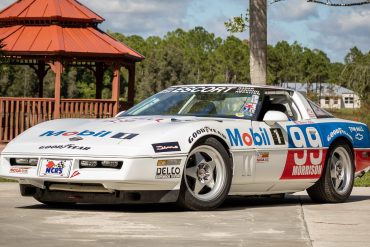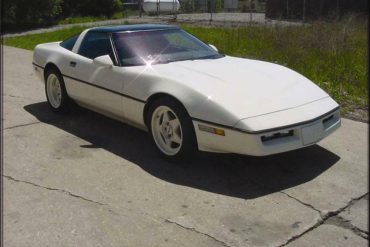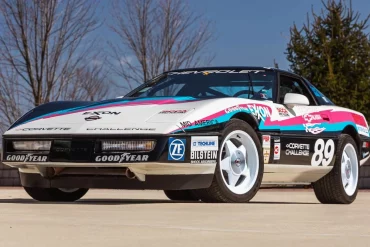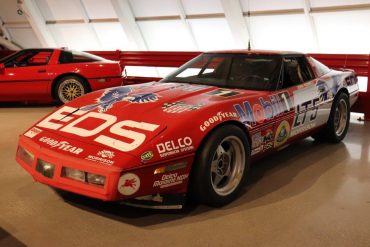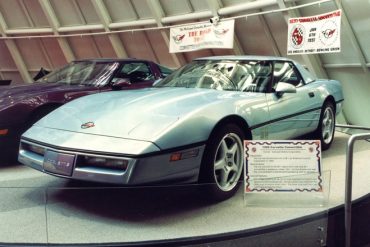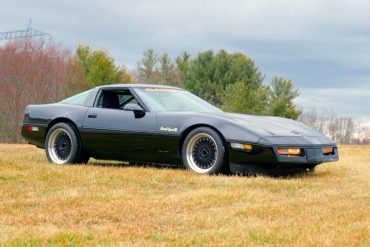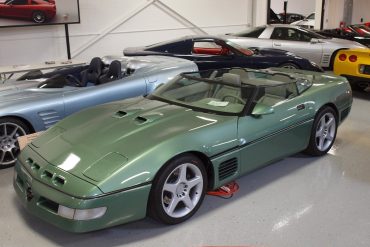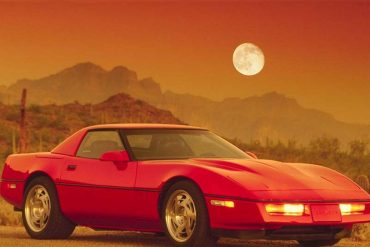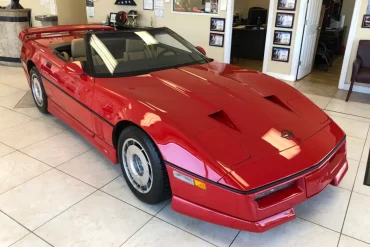The 1990 Escort World Challenge Series Corvette R9G's were only available for one week. Only race teams were allowed to order this very rare Corvette through dealerships. The 1990 Corvette had its own code like the '88 & 89's did, it was dubbed the "R9G" Corvette. The cars were produced for the express purpose of racing in the SCCA World Challenge Series. In 1990, dealers could order cars destined for the World Challenge race series.
In the late 80s, Chevy was developing what some dubbed a ‘Super Vette.’ But the 1989 debut of the Dodge Viper sent GM engineers on a new path to develop a ‘Viper-Killer.’ It started with a factory test mule and the experiment was to see how a ZR-1 would perform if given more power and less weight. It was so fast it was called "Snake Skinnner", for it's ability to beat the Viper and Cobra.
The 1989 Corvette Challenge cars had a unique option code from the factory, it was "R7F". The documentation from GM clearly indicates that the cars were produced for the express purpose of racing in the SCCA Corvette Challenge Series. There is also documentation that identifies by serial number, all Corvettes produced with these option codes. Therefore, it is relatively easy to validate the authenticity of any Challenge car.
On March 1-2 1990 a unique group of people using a Chevrolet Corvette ZR-1, reset The 24-hour World Speed Record. That achievement proved unequivocally that the car is indeed...King of the Hill. "The 24" had stood for 50 years. Last set at Bonneville in 1940 by AP Jenkins driving the "Mormon Meteor Ill", a purpose-built. single-seat race car with an aircraft engine. The objectives: set the 24 as well as 5000 kilometer and the 5000 mile marks with a ZR-1 while using an L98-powered Corvette to set the six-hour record and other shorter distance marks.
There were several successful attempts to build a convertible ZR-1, most of them by private people. The DR-1 was a GM prototype to test the structural integrity of the ZR-1 chassis when it would be topless. The car was built by American Sunroof Corporation (ASC) for Don Runkle, who was the vice-president of Advanced Engineering Staff, which explains the “DR-1” designation. It was a standard convertible transformed to ZR-1 specs.
When Dick Guldstrand introduced the GS80 series in 1986, the car was targeted specifically at Pro-Solo and autocross enthusiasts. He knew all about the needs of these groups, as he was a longtime provider of performance upgrades for the C3 and a direct supporter of a small team of racers from the Western Council of Corvette Clubs. Up to this point, Dick had basically been a tuner. With the intro of the GS80 he was venturing into the realm of small-volume manufacturing.
In 1989 Callaway introduced a Speedster which was the culmination of their styling, engineering and trimming talents. Their first example was a bright green ZR1, which had a severely chopped windscreen, no side mirrors, eighteen inch wheels and a vibrant blue leather interior stitched purposefully from Germany. Nothing about Callaway’s Speedster was reserved, and this is especially true when investigating the specification. The car had 450 horsepower.
How do you beat a slew of Fox-Body 5.0 Mustangs that seemingly dominated the roads in the late '80s? You take a 454 cu.-in. big-block engine and stuff into a C4 Corvette and call it "Big Doggie". An experimental vehicle used to determine how to convert from a small block to a big block. Its 454 big block V8 along with its orange paint make this high horsepower engineering study a one-of-a-kind standout in Corvette history. The car had as much HP as the '90 ZR-1 did and it was named "ZR-2" or "Big Doggie". Old dog, new tricks joke?
Offered from 1987 to 1991, the RPO-B2K upgrade was available from any Chevrolet dealer and also Callaway’s first major Corvette tuning program. Together, GM and Callaway made the upgrade package a Regular Production Order (RPO) which was the first time GM had outsourced such an option to a specialist manufacturer. It even had a factory back warranty. As the C4 updated, so did Callway’s program and by 1988, the B2K was pushing 382 bhp and 562 ft. lbs. of torque.


